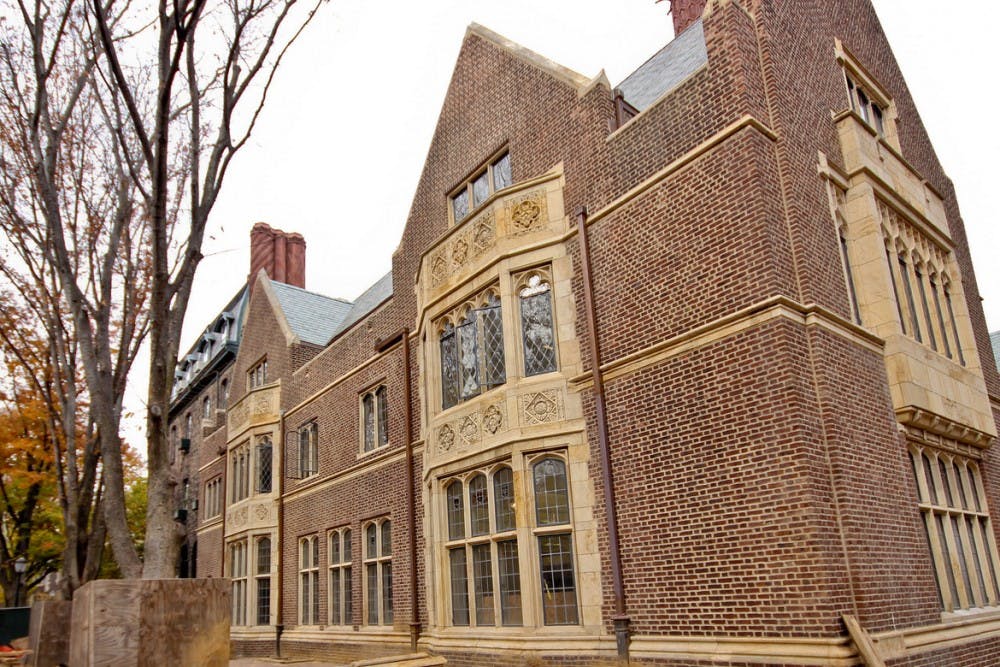
ARCH (Arts Research and Culture House) is home to three cultural resource centers: La Casa Latina, Makuu: The Black Cultural Center and the Pan-Asian American Community House.
Cultural centers at Penn aim to provide safe spaces for minority students. While many participate, others find them socially limiting.
Many minority students at Penn find it helpful to have spaces on campus where they can connect to people who share their ethnic and cultural backgrounds.
Although over half of students at Penn identify as minorities, many minority students find it necessary to have their own spaces on campus. Many black students opt to live in Du Bois College House, for example, which Penn Residential Services describes on its website as a community providing "an environment that embraces African American scholarship and culture." In addition, the ARCH building houses Makuu: The Black Cultural Center, La Casa Latina, and the Pan-Asian American Community House.
College sophomore Ray Clark, co-chair of UMOJA — Penn’s undergraduate umbrella organization for African Diaspora organizations on campus — believes that spaces designated specifically for minority students are vital for making these students feel comfortable at Penn.
"It's important for a university as diverse as Penn to have spaces for students to feel at home," Clark said. "I think Du Bois serves the same role as Hillel, the GIC [Greenfield Intercultural Center], the LBGT Center and the ARCH — which is to build community."
Clark stressed that these cultural centers are open to all students.
"The thing people should know is that these spaces are welcome to everyone, and the best way to learn about different cultures is to visit," Clark said.
But not all minority students feel as comfortable in these groups as they would like.
“Just because you call it safe doesn’t mean it’s actually a safe and welcoming space,” College junior Abel McDaniels said.
College sophomore Brooke Edwards believes cultural centers could do more to ensure they are open to students and helping them in the most effective way.
“We must, however, work harder to ensure that these spaces actually fulfill their mission of being open and inclusive,” Edwards said.
Other students are not concerned about having a separate social space based on backgrounds. “I guess there is some solace in being in a friend group where you can all relate based off race, but I find that that only gets one so far," College freshman Elaina Joseph said. "Race doesn't matter in friendship for me and I have some really awesome friends because I chose them for them and not their skin color."
Other students feel like they don’t fit in with racially-labeled groups. College freshman Destiny Bingham went to a high school with mostly minority students. Still, she said of the experience, “I didn't feel like I fit in with the black kids at my predominantly black and latino school.”
Despite the fact that cultural centers are aimed at being resources mostly for people of specific backgrounds, McDaniels and Edwards reject the idea that any of these groups are forms of self-segregation.
“We don’t call it self-segregation when it’s a group of white people,” Daniels said.
"To me, the term 'self-segregation' has this negative connotation that seems to blame minority students themselves for not integrating into the more mainstream school culture without questioning why," she added. "We need to start looking at mainstream Penn culture and just how unwelcoming it can be for minority students at this university."
Edwards feels that despite concerns she might have with these sectioned-off cultural spaces, they are still integral to her Penn experience.
“It's absolutely essential that minority students have their own spaces on campus where they can feel safe and at home,” Edwards said.
The Daily Pennsylvanian is an independent, student-run newspaper. Please consider making a donation to support the coverage that shapes the University. Your generosity ensures a future of strong journalism at Penn.
DonatePlease note All comments are eligible for publication in The Daily Pennsylvanian.








